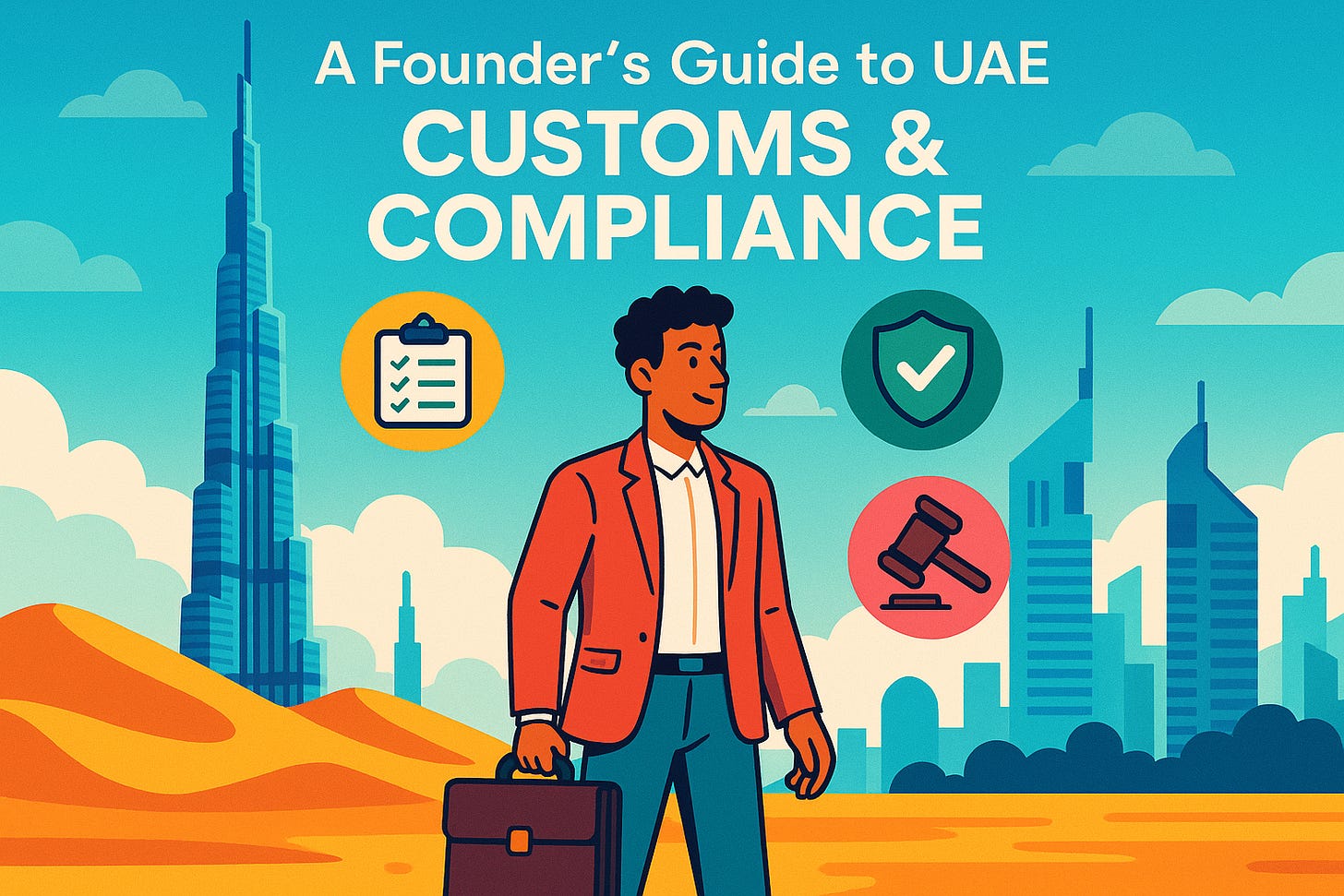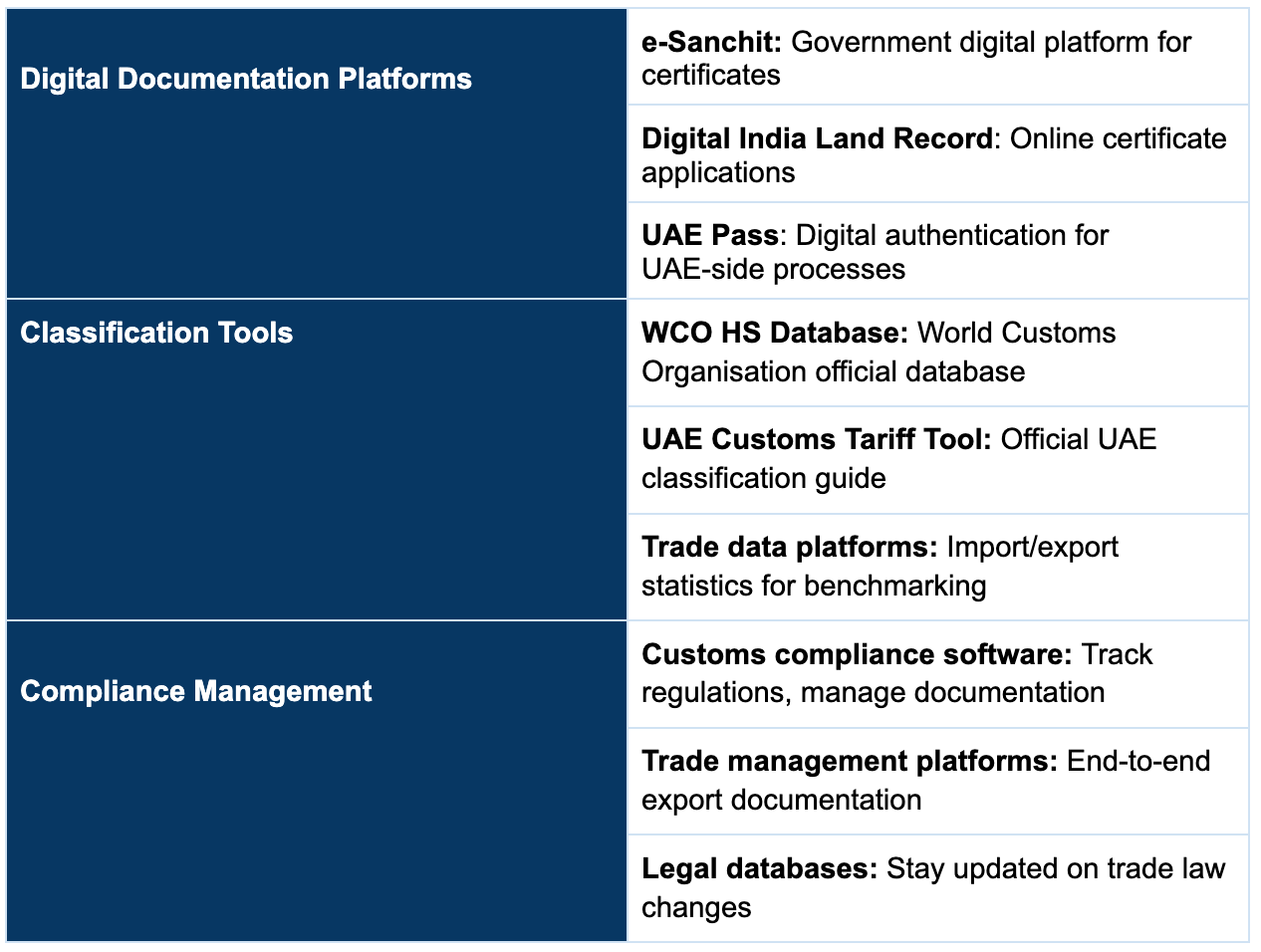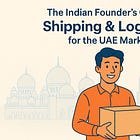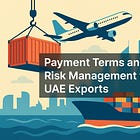A Founder’s Guide to UAE Customs & Compliance
This guide walks founders through the essentials of customs, licenses, and regulatory requirements for hassle-free UAE exports.
You’ve landed your first big UAE order, the products are packed, and the shipment is ready to go. But at the port, the consignment gets held up because of a missing certificate, a wrongly declared HS code, or a compliance requirement you didn’t even know about. Suddenly, what should have been a smooth delivery turns into a costly delay.
For many first-time exporters, it’s not the product or the buyer who causes stress- it’s customs and compliance. The UAE has clear rules around documentation, product standards, and duties, and understanding them upfront can save you from surprises later.
In this article, we’ll break down the essentials so you can ship to the UAE and avoid unnecessary roadblocks in the journey.
What are HS Codes?
Every product you export must be classified under an HS Code (Harmonised System Code)- a global system used to identify goods in international trade. It’s a 6-digit universal code, with countries (like the UAE) often adding extra digits for more specific classifications.
What HS codes actually do:
Determine duty rates: Most products face 5% customs duty in the UAE, but some are 0% and others can be 10-20%
Set VAT rates: 5% VAT applies on CIF value + customs duty for most goods
Trigger certification requirements: Certain codes require ECAS certification, permits, or additional documentation
Control restrictions: Some codes are restricted or require special licenses
How to Find Your Correct HS Code?
1. Method 1: Go to customs.gov.ae (UAE Federal Customs Authority Website) and use their tariff search. It’s the most authoritative source, but can be technical to navigate.
Search in both English and Arabic if you’re getting confusing results. Sometimes the Arabic classification is clearer.
2. Method 2: Consult Your Freight Forwarder. They often have customs classification expertise. They’ve seen similar products and know what works.
3. Method 3: Browse Amazon UAE or Noon for similar products and see their detailed specifications. Often gives clues about how similar products are classified.
4. Method 4: For complex or high-value products, consider hiring a customs consultant. Costs ₹15,000-50,000 but can save much more in the long run.
UAE Customs Process: What Actually Happens?
Delays, inspections, or additional queries are all part of global trade, but with the right preparation, they don’t have to derail your shipment or your cash flow.
Prerequisites
Your UAE buyer/importer must have:
Valid UAE trade license
Import/export activities listed in their license
VAT registration (if applicable)
Any special permits for restricted goods
Your products must align with your importer’s licensed business activities. If they’re licensed to import textiles, they can’t clear your electronics shipment.
Step-by-Step Customs Clearance
1. Electronic Declaration (Before Arrival): Your UAE importer or their customs broker files an electronic customs declaration with all shipment details.
What they need from you:
Commercial invoice
Packing list
Certificate of origin
Any product-specific certificates
2. Document Verification (24-48 hours): UAE customs reviews all documents electronically. They check for:
Completeness and accuracy
Proper HS code classification
Reasonable valuations
Required certifications
3. Risk Assessment and Selection: Based on various factors like first-time or not, high value, restricted categories, document discrepancy, etc, customs decides whether to provide:
4. Physical Inspection (If Selected: If your shipment is selected for inspection:
The container is moved to the examination area
Customs officers physically verify contents
They check quantities, specifications, and condition
Photos and samples may be taken
It might take up to 1-3 additional days, depending on complexity
5. Duty and VAT Calculation: Based on CIF value (Cost + Insurance + Freight):
Customs duty: Usually 5% of CIF value
VAT: 5% of (CIF value + customs duty)
Example:
CIF value: $10,000
Customs duty: $500 (5%)
Taxable value: $10,500
VAT: $525 (5%)
Total taxes: $1,025
6. Payment and Release: The UAE importer pays duties and VAT, customs issues release authorisation, and goods can be delivered.
Typical Clearance Timeframes
While the exact timeline depends on product type, documentation accuracy, and inspection requirements, here’s a general guide:
Standard shipments (no issues): 1-3 working days
First-time imports or complex products: 3-7 days
Problematic/delayed shipments: 1-2 weeks or more
Documentation Best Practices
In the UAE trade, paperwork is everything. Even a small error- like a mismatched invoice detail or an incorrect HS code- can hold up your shipment at customs. Here’s how to get it right every time.
1. Commercial Invoice
The commercial invoice is the backbone of your export documentation. It’s a legal document that UAE customs uses to verify the value, classification, and legitimacy of your goods. It typically includes-
Company Details:
Your complete company name and address
UAE importer’s complete details
Both companies’ tax registration numbers
Product Information:
Exact product descriptions (not “handicrafts” but “handwoven cotton table runners with block print design”)
Correct quantities and units of measurement
Unit prices and total values in USD
Proper HS codes for each line item
Value Declaration:
Use actual transaction values
Include any additional costs (royalties, commissions)
Declare freight and insurance separately if using CFR/CIF terms
Authentication:
Authorised signatory’s signature
Company seal/stamp
Date of issuance
2. Packing List
If the commercial invoice tells customs what you’re shipping, the packing list tells them how it’s packed. It’s a detailed breakdown that helps UAE customs, freight forwarders, and buyers verify the shipment’s contents without opening every box. It typically includes:
Box-by-box breakdown of contents
Exact quantities in each package
Net and gross weights
Package dimensions
Marks and numbers on packages
3. Certificate of Origin
The Certificate of Origin is an official document that certifies where your goods were manufactured. For the UAE, it’s a mandatory requirement for most imports because it determines eligibility for preferential tariffs, compliance with trade agreements, and authenticity of the product’s source.
How to get it?
Apply to your local Chamber of Commerce
Submit a commercial invoice and supporting documents
Pay fees (typically ₹500-1,000)
Collect within 1-2 working days
Many Chambers now offer online applications and digital certificates. UAE customs accept digital certificates from recognised Indian Chambers.
4. Product-Specific Documentation
If you’re selling electronics, cosmetics, toys, medical devices, or certain food items, you need ECAS (Emirates Conformity Assessment Scheme) certification. This can cost ₹50,000-200,000, depending on product category and testing requirements.
Other Common Certificates:
Halal certification: For food products going to Muslim markets
Organic certification: For organic food/cosmetic products
ISO certificates: Quality management certifications
Test reports: Supporting technical specifications
How to Deal with Customs Issues?
The truth is, customs issues are inevitable in global trade. What separates successful exporters from the rest is how quickly and smartly they respond. Instead of panicking, the best approach is to stay calm, know the process, and be ready with solutions that keep your shipments moving and your customers happy.
When Your Shipment Gets Stuck
Get specific information like the exact reason, problematic documents or any additional information.
Work with your UAE partner. Visit the customs office directly and submit additional documentation.
For complex issues, hire a UAE-based customs consultant.
Handling Classification Disputes
Provide detailed product specifications
Submit technical documentation
Reference similar products’ classifications
Accept reclassification if reasonable (fighting isn’t always worth it)
When in doubt, get an advance ruling from UAE customs before your first shipment.
Managing Valuation Queries
Provide supporting documentation (purchase orders, contracts, payment records)
Explain any special pricing (discounts, related party transactions)
Show comparable market prices if available
Be transparent about actual transaction values
How to Build Long-term Compliance for the UAE Market?
Establish Relationships
With UAE customs brokers
With UAE importers
With Indian authorities
Stay Updated on Regulations
Subscribe to UAE customs updates
Join trader associations
Regular consultation with customs experts
Networking with other exporters
Maintain Compliance Records
All customs clearance records
Classification decisions
Valuation acceptances
Certification renewals
Any disputes and their resolutions
Technology and Tools for Customs & Compliance
That’s a wrap on our UAE export series! Hopefully, this gives you the clarity to start or scale your journey there. And while the UAE is a big milestone, it’s just one stop- next up, we’ll dive into the UK market and unpack what Indian founders should know before making the leap.
Relevant Articles:
Dive into Vault today & unlock a world of possibilities.










